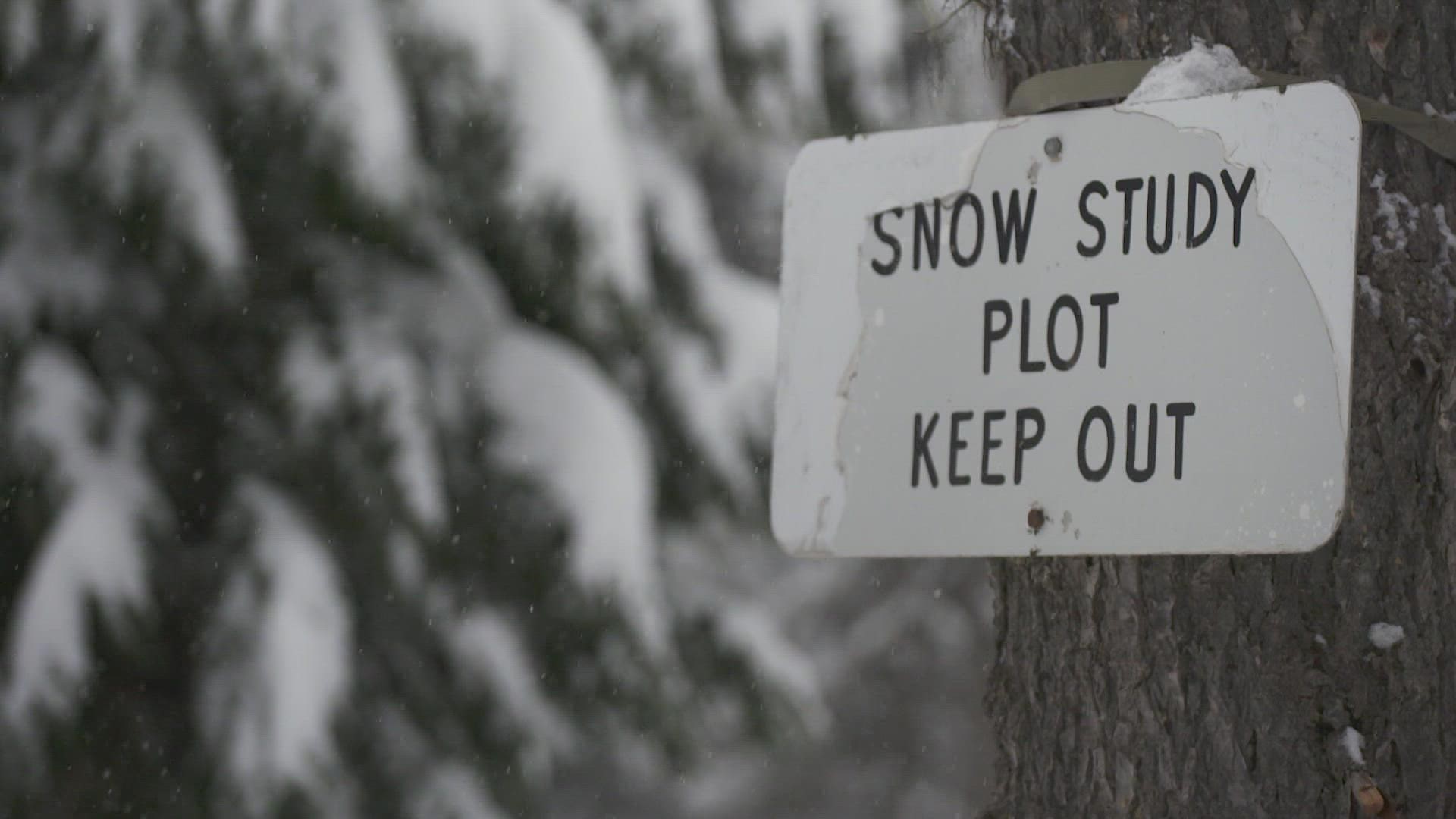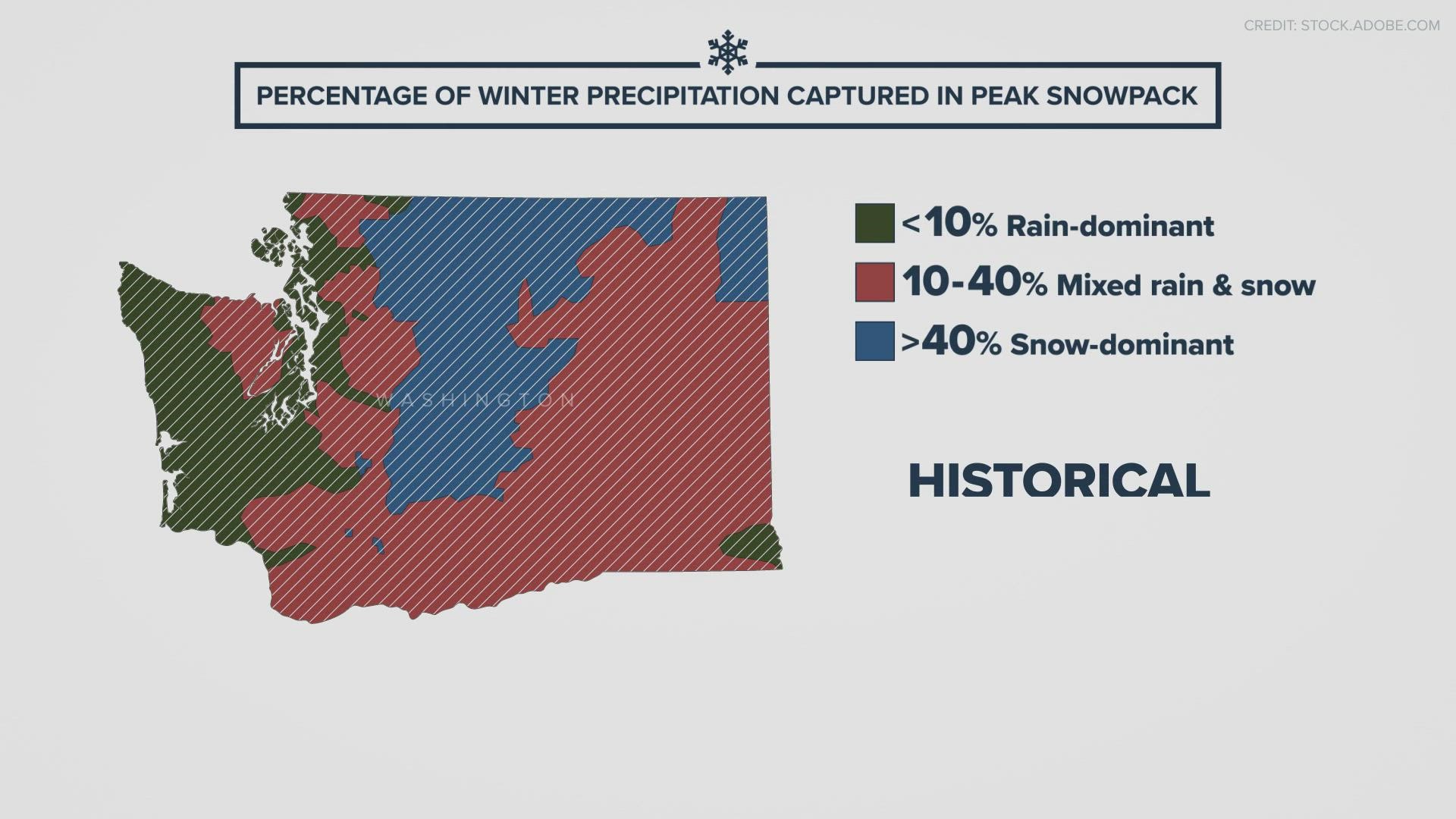SEATTLE — Snowpack in the Cascade and Olympic mountains plays an important role in Washington.
The additional water that snowpack provides after it melts is put to good use, allowing us to do everything from take showers to irrigate crops. It provides stream flows and cools water temperatures to allow salmon and other fish to survive.
A good snowpack can also help moderate wildfire season.
But the snowpack is in trouble.
"It’s warm snow,” said climate scientist Guillaume Mauger of the Cascade and Olympic mountain snowpack in Washington. Mauger works with the University of Washington’s Climate Impacts Group. “It’s going to be easy to melt. We’ve already seen a lot of snow decline.”
At times it can be hard to envision little to no snow in the Cascades or Olympics, though we are seeing extremes.
The Mt. Baker Ski area set a global record for recorded snowfall in the winter of 1998-1999. A decade and a half later, the region saw record-low snowpack by the spring of 2015. The winter of 2015 was followed by a record wildfire season the following summer.
The spring of 2021 saw a banner snow year, at or near 150% of normal, only to melt off early as the state hit record-high temperatures, including 108 degrees recorded at Sea-Tac airport in June. A few years ago, temperatures over 100 were unheard of in western Washington.
The following graphic shows snowpack projections in Washington. Blue represents a winter landscapes dominated by snow, green is for rain, and red represents a mix of rain and snow.
By the 2040s, projections from the Climate Impacts Group show snow dominance shrinking dramatically and being limited to just the northern Cascades. By the 2080s, it’s completely gone.
“It becomes a dry climate in the summer, even on the west side of the state,” Mauger said. “So, in the winter when you have less snowpack, you get a higher snow line. It means you’re getting rain over a much bigger area.”
Mauger said we're seeing those changes now, and they're accelerating.
It’s not that there won’t be snow, according to Mauger and other researchers. It’s that it will be higher in the mountains where there is less real estate to store it. The winter snow season will also be shorter.
"Spring is coming earlier in the year if you’re in Oregon, California, Washington, and down south,” Scripps Institution of Oceanography scientists Amato Evan and Ian Eisenman wrote in a study published in 2021. They call it a “shrinking” winter.
“Declining trends are observed across all months, states and climates, but are the largest in spring, in the Pacific states and locations with mild winter climate," a 2018 article in npj/Climate and Atmospheric Science states.


